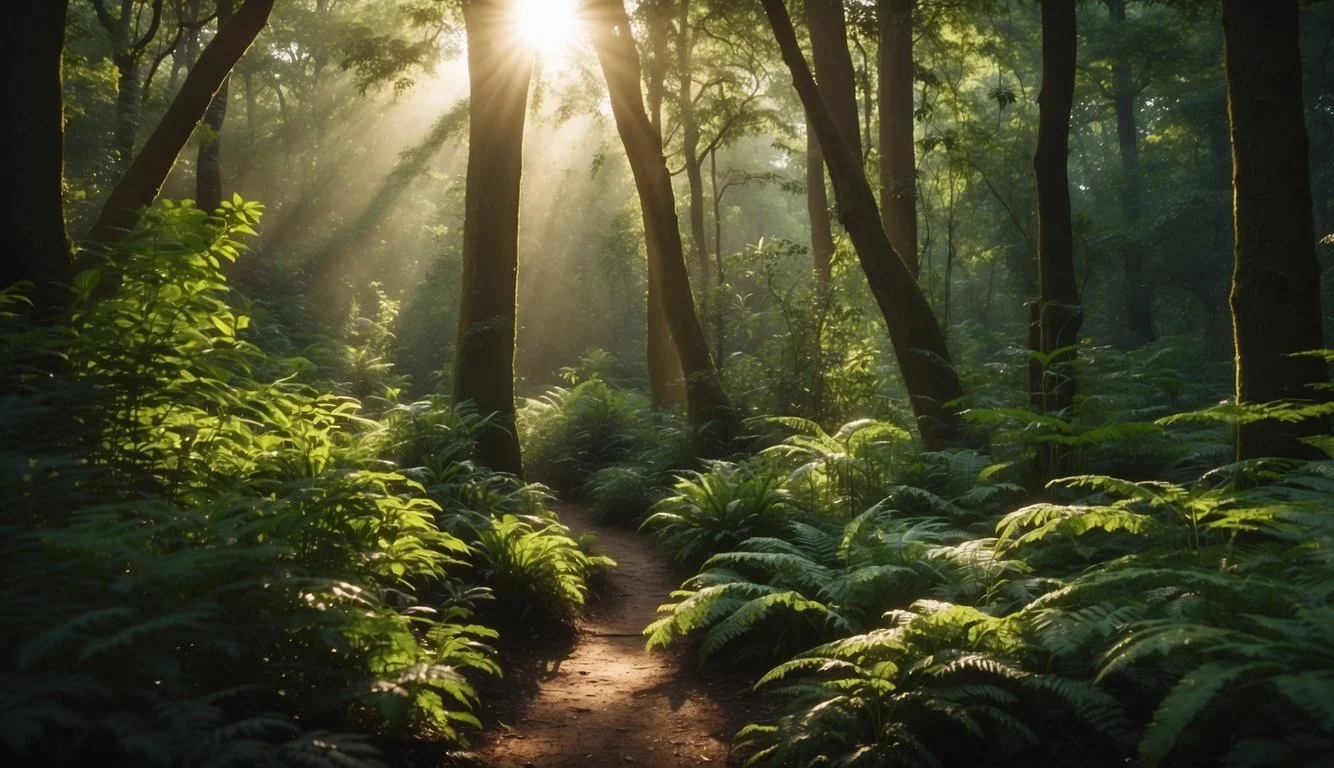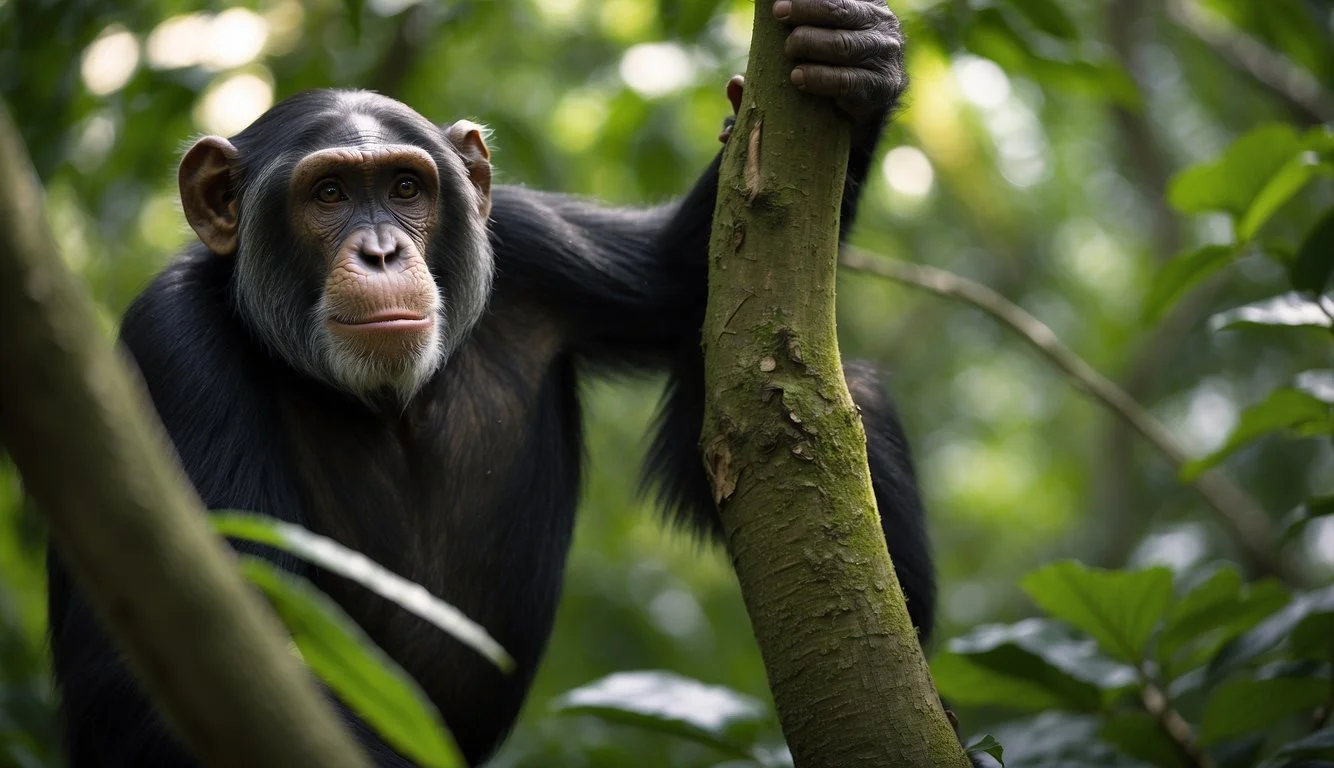Documentary Review: Jane (2017)
A Deep Dive into Jane Goodall's Legacy
Brett Morgen's 2017 documentary "Jane" takes viewers on an absorbing trip into the wild with renowned primatologist Jane Goodall. Utilizing footage long thought lost, the film vividly illustrates Goodall's groundbreaking research and her observations of chimpanzees, challenging conventional wisdom about what makes humans unique.
"Jane" is not just a documentary about wildlife; it's a compelling portrait of a woman’s dedication and pioneering spirit. Goodall's contributions, made possible by a grant from National Geographic and the documentation by filmmaker Hugo van Lawick, who later became her husband, have left an indelible mark on both science and society.
The film captures the essence of Goodall's relentless curiosity and the intimate bond she formed with the natural world. It's a testament to how her work has redefined our relationship with animals and our environment, making "Jane" one of the most impactful documentaries of its time.
Background on 'Jane'
"Jane" (2017) is a documentary film that delves into the remarkable life of Jane Goodall. It explores the production process, profiles the director Brett Morgen, and provides historical context for Goodall's groundbreaking work.
Production Overview
"Jane" was directed and written by Brett Morgen. The film was produced by Brett Morgen, Tony Gerber, Bryan Burk, and James A. Smith. Notably, Philip Glass composed the music, adding a profound auditory layer to the visual storytelling. The cinematography by Ellen Kuras captures the essence of Goodall's work in the wild.
National Geographic played a significant role in the film’s creation, providing a grant that allowed for extensive documentation of Goodall's research. The film has gained critical acclaim, winning the Critics' Choice Documentary Award for Best Documentary in 2017.
Director's Profile: Brett Morgen
Brett Morgen is an accomplished filmmaker known for his innovative approach to documentary storytelling. He has a history of blending archival footage with contemporary interviews to create immersive narratives. Morgen's previous works include "The Kid Stays in the Picture" (2002) and "Cobain: Montage of Heck" (2015), showcasing his versatility and skill in handling diverse subjects.
In "Jane," Morgen combines over 100 hours of previously unseen footage of Goodall's early explorations with new interviews. His intricate editing and thoughtful direction shine through, offering a deeply engaging look at Goodall's contributions to primatology and conservation.
Historical Context
Jane Goodall’s journey began in 1957 when, at 26 years old and with little scientific background, she traveled to Tanzania to study chimpanzees. Her observations challenged established theories about human uniqueness and brought new understanding to the field of primatology.
At the time, women in science were rare, making Goodall's achievements even more remarkable. The documentary highlights her perseverance, the obstacles she faced, and her pivotal role in changing perceptions about the animal kingdom. Goodall’s work has had a lasting impact on both scientific research and wildlife conservation efforts globally.
Synopsis of 'Jane'
Jane is a 2017 American biographical documentary directed by Brett Morgen.
The film chronicles the early years of renowned primatologist Jane Goodall. She was assigned by paleoanthropologist Louis Leakey in 1957 to study wild chimpanzees in Gombe, Tanzania.
Using footage long thought lost, Jane reveals her groundbreaking work and observations. This includes her discovering that chimps use tools, challenging contemporary views on the uniqueness of human behavior.
Goodall's early life and background, including her love for animals, are also explored.
National Geographic funded her research and sent filmmaker Hugo van Lawick to document her work. Over time, Jane and Hugo developed a romantic relationship, marrying and having a son named Grub.
Key moments include her adapting to life in the wild and the realization of the aggressive behaviors in chimps.
The film highlights both the scientific and personal milestones of her career. The cinematography and newly discovered footage offer a vivid glimpse into her pioneering journey.
Cinematography and Visual Style
Brett Morgen's documentary "Jane" intricately weaves together archival footage and thoughtful composition to bring Jane Goodall's revolutionary work to life. Both the integration of vintage footage and the vibrant use of color and composition play crucial roles in the storytelling.
Archival Footage Integration
The documentary features over 100 hours of archival footage shot by Hugo van Lawick, Goodall's ex-husband. This footage, previously unseen, is skillfully curated by Morgen to highlight key moments in Goodall's career. The use of these early recordings provides an authentic and immersive look into her pioneering research on chimpanzees.
Lawick's original filming, with its candid and unfiltered approach, lends an intimate perspective. The preservation and restoration of these visuals are meticulous, allowing viewers to experience the jungle landscapes and chimpanzee behaviors as Goodall saw them.
Color and Composition
Color and composition are significant elements in "Jane," elevating the narrative beyond standard documentary formats. Bright, lush greens dominate the jungle scenes, contrasting with the earthy tones of Jane's attire, creating a vivid portrayal of her environment.
Morgen's selection of modern-day interviews and their backgrounds also complements the historical footage. The strategic use of color not only enhances the visual appeal but also aids in distinguishing between past and present, adding layers to the storytelling.
Compositionally, the documentary includes a mix of close-ups and wide shots. Close-ups focus on Goodall's emotions and interactions, while wide shots capture the grandeur of the Gombe Stream National Park. These choices in framing draw viewers deeper into both the personal and scientific aspects of the story.
Narrative and Structure
The documentary Jane focuses on the life and work of Jane Goodall, chronicling her groundbreaking observations of chimpanzees in Tanzania. Directed by Brett Morgen, the film uses a blend of archival footage and contemporary interviews to construct its narrative.
The narrative is primarily structured around Goodall’s experiences in the 1960s, showcasing her interactions with chimpanzees through never-before-seen footage. This "found" footage, provided by National Geographic, adds a layer of authenticity and depth to the storytelling.
The film intersperses personal insights from Goodall herself, creating an intimate portrait of her journey. This approach helps to humanize the scientific narrative, making it accessible to a wider audience. The interviews highlight her reflections and the emotional aspects of her experiences.
Key Elements of the Structure:
Archival Footage: Predominantly from the 1960s.
Interviews: Insights from Jane Goodall.
Emotional Triggers: Moments of discovery and personal anecdotes.
By limiting the narrative span to the crucial activities of the 1960s, Morgen ensures a focused and coherent storyline. The use of 16mm color footage enhances the visual appeal, providing a vivid glimpse into Goodall's world.
The pacing of Jane is carefully crafted, balancing scientific explanations with personal storytelling. This equilibrium helps maintain viewer engagement throughout the 90-minute runtime. The integration of Goodall’s voice, both as a narrator and an interview subject, lends a personal touch to the historical accounts, making the documentary both informative and compelling.
Musical Score and Sound Design
The musical score for Jane (2017), composed by Philip Glass, is a standout feature that enhances the emotional depth and narrative of the documentary. Glass's distinctive style brings a unique auditory experience to the film, enriching its storytelling and visual elements.
Original Score by Philip Glass
Philip Glass, a renowned minimalist composer, crafted the original score for Jane with his signature repetitive structures and rich harmonies. His compositions effectively underscore Jane Goodall's adventures and discoveries, adding layers of emotion and intensity.
The music intricately weaves through Goodall's journey, seamlessly complementing the visuals with an engaging and immersive auditory experience. Themes in Glass’s music, characterized by their rhythmic and melodic patterns, align perfectly with the film's tone, capturing both the wonder and challenges faced by Goodall in her groundbreaking chimpanzee research.
Themes and Interpretation
"Jane" (2017) masterfully weaves themes of conservation and personal resilience, spotlighting Jane Goodall's groundbreaking efforts and her profound relationship with the natural world. The documentary also examines her emotional and professional milestones, showcasing her dedication to both her work and her personal journey.
Conservation Efforts
The documentary prominently highlights Jane Goodall's revolutionary approach to conservation. Her early work in Tanzania's Gombe Stream National Park introduced the world to the complex social behaviors and emotional lives of chimpanzees. Goodall's research underscored the urgent need to protect these animals and their habitats, contributing significantly to wildlife conservation efforts.
The extensive archival footage, capturing her interactions with the chimpanzees, emphasizes the importance of empathy and understanding in conservation. Goodall's ability to observe without interfering set a new standard for field research, promoting more ethical and sustainable practices.
Personal Struggles and Triumphs
"Jane" also delves into Goodall's personal life, revealing the challenges she faced as a woman in a male-dominated field. Initially entering the primatology field with no formal scientific training, she overcame skepticism and prejudice to become one of the most respected figures in science.
Her relationship with Dutch filmmaker Hugo van Lawick, who documented much of her work, evolved into a professional and personal partnership. Their marriage and the birth of their son, Grub, illustrate her ability to balance personal commitments with her passionate dedication to her career.
Critical Reception
"Jane" (2017) has been praised for its captivating and insightful portrayal of Jane Goodall's work with chimpanzees. The documentary received acclaim from both academic circles and the general public, reflecting its broad impact and relevance.
Academic Responses
Scholars and experts in primatology and documentary filmmaking have commended "Jane" for its meticulous research and authentic representation. The film benefits from the use of over 100 hours of footage shot by Hugo van Lawick, providing an unprecedented look at Goodall's early work.
Brett Morgen's direction and Philip Glass's musical score are notable highlights that enhance the film’s educational value.
Rotten Tomatoes features an approval rating of 98%, underscoring the film’s credibility and acceptance among critics. The film’s contribution to the discourse on wildlife conservation and primatology is considered significant by many in the academic community.
Public and Box Office Reception
The public reception of "Jane" has been overwhelmingly positive, cementing its success at the box office and among viewers. It has been described as both absorbing and beautifully filmed, attributes that resonate well with a general audience.
The documentary was funded by National Geographic, which speaks to its high production values and broad appeal. Audience reviews often highlight the inspirational aspect of Jane Goodall's life and work, amplifying the film's emotional impact.
The film’s success is also reflected by its win of the Critics Choice Documentary Award for Best Documentary in 2017, indicating widespread public approval.
Impact and Legacy
"Jane" (2017) has significantly shaped the public's appreciation of Jane Goodall's work and her contributions to primatology. The documentary, directed by Brett Morgen, refocused attention on Goodall's pioneering research on chimpanzees.
The film showcases her resilience and dedication to studying primates, bringing her groundbreaking observations to a wider audience. By integrating archival footage and Goodall's own reflections, the film creates a compelling narrative.
Another notable aspect of "Jane" is its reception. It received acclaim for its storytelling and visual presentation. Awards and nominations include a BAFTA nomination and recognition as the best documentary of 2017 by 18 national critics' groups, the Producers Guild of America, American Cinema Editors, the Broadcast Film Critics Association, and the National Board of Review.
The film also highlights the personal aspects of Goodall's life, such as her marriage to Dutch filmmaker Hugo van Lawick and the birth of their son, Grub. This personal perspective adds depth to the understanding of her as not only a scientist but also a person.
"Jane" has inspired new generations of scientists and conservationists. It has reignited interest in primatology and the conservation of chimpanzees. Additionally, it underscores the importance of long-term studies and personal investment in scientific research.
The impact of "Jane" extends to the legacy of National Geographic's documentary filmmaking. By setting a high standard for visual storytelling and subject engagement, the documentary demonstrates how historical footage can be repurposed to create a modern, relevant narrative.
"Jane" continues to be a touchstone for both popular audiences and the scientific community, highlighting the enduring significance of Goodall's contributions to our understanding of primates and conservation.
Comparative Analysis
"Jane" offers insights into both contemporary documentary filmmaking and historical wildlife films. This section will explore how "Jane" stands in relation to modern documentaries and older wildlife films.
Contemporary Documentaries
Modern documentaries emphasize immediacy and relevance, often addressing current issues. "Jane" diverges by offering a historical perspective enriched by decades of hindsight. Brett Morgen’s access to over 100 hours of archival footage from Jane Goodall's ex-husband, Hugo van Lawick, provides a depth seldom seen in newer works.
Technological advancements have enabled high-definition visuals and enhanced storytelling in today's documentaries. However, "Jane" relies on the raw, authentic footage from the past, augmented by Morgen’s narrative prowess. This combination results in a film that feels both timeless and immediate.
Historic Wildlife Films
Historic wildlife films focused primarily on exploring unknown territories and documenting animal behavior. "Jane" stands out by blending this traditional focus with a biographical narrative. Hugo van Lawick’s original footage captures the essence of 1960s Tanzania and the chimpanzees, making it a vivid historical record.
Unlike earlier wildlife films that often portrayed animals as mere subjects, "Jane" emphasizes the interconnectedness of humans and animals. Goodall's innovative approach to chimpanzee research challenged many existing beliefs, positioning "Jane" as a transformative document in the genre. The film not only honors the legacy of early wildlife filmmakers but also enriches it with a deeper understanding of behavioral science.






